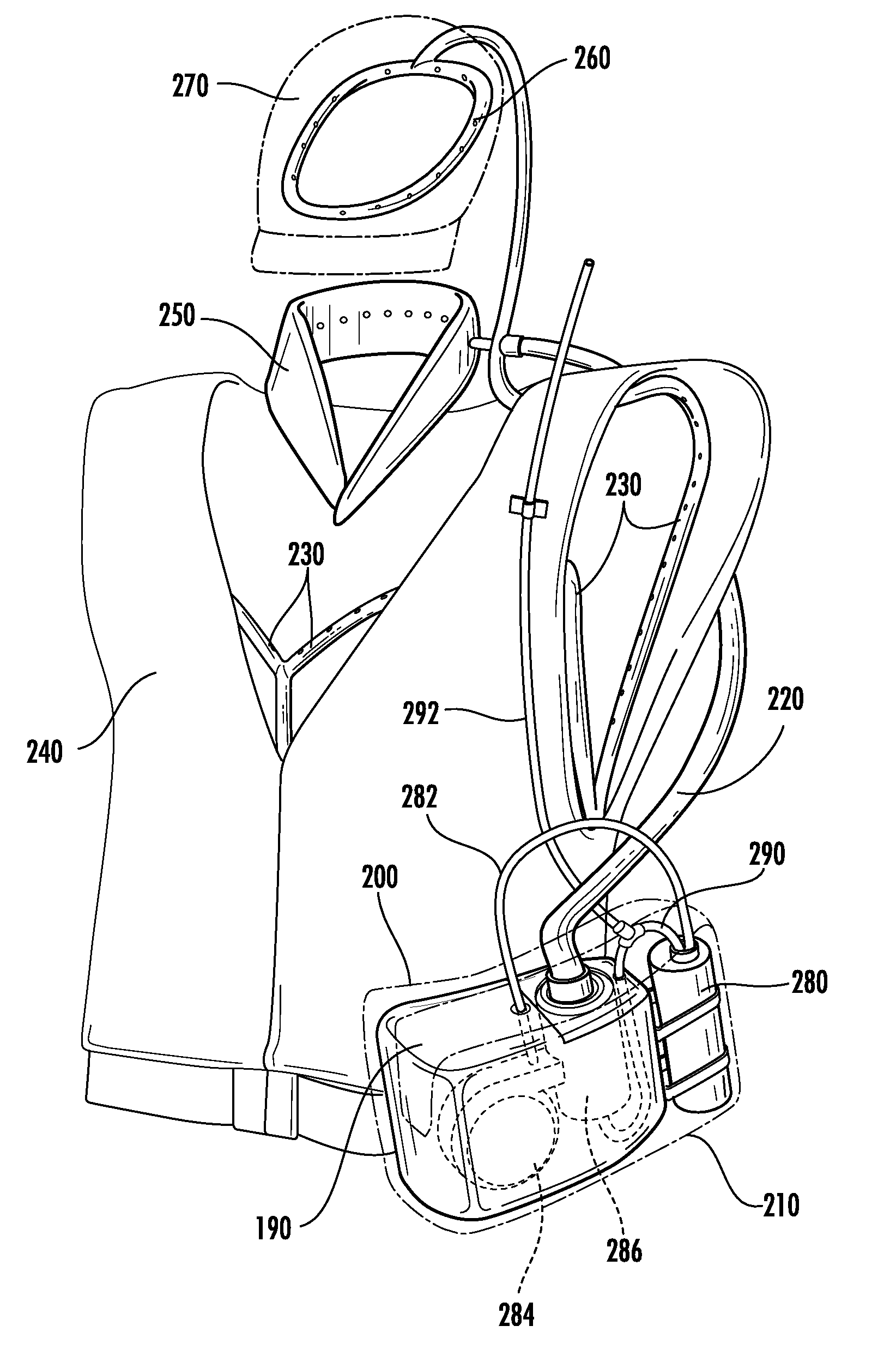Wearable personal air conditioning system
a technology of air conditioning system and wearable body, which is applied in the direction of heating types, cooling apparatus, separation processes, etc., can solve the problems of accelerating body heat transfer, severe disorders or even deaths, and accelerating body water loss
- Summary
- Abstract
- Description
- Claims
- Application Information
AI Technical Summary
Benefits of technology
Problems solved by technology
Method used
Image
Examples
Embodiment Construction
[0026]Referring to the Figures, wherein like numerals indicate like or corresponding parts, an exemplary personal air conditioning device is shown in FIG. 1 and generally designated by the reference numeral 100. The personal air conditioning device 100 can include a tubular moisture exchange cartridge 110, a device enclosure 120, an air blower 130, a replaceable power supply 140, a water transferable media 150, preferably a porous sponge, inside a liquid coolant reservoir 181.
[0027]The tubular moisture exchange cartridge 110 as shown in FIGS. 2A-D, can include a bundle 111 of polymer membrane hollow capillary tubes 112 having micro-porous structure and a cartridge housing 113 accommodating the bundle 111. The capillary tubes 112 provide an interstitial space 118 between and among the capillary tubes 112. The cartridge housing 113 is preferably generally cylindrical. The bundle 111 at a first edge facing an intake side 114 of the tubular moisture exchange cartridge 110 can encapsulat...
PUM
| Property | Measurement | Unit |
|---|---|---|
| Flow rate | aaaaa | aaaaa |
| Area | aaaaa | aaaaa |
| Permeability | aaaaa | aaaaa |
Abstract
Description
Claims
Application Information
 Login to View More
Login to View More - R&D
- Intellectual Property
- Life Sciences
- Materials
- Tech Scout
- Unparalleled Data Quality
- Higher Quality Content
- 60% Fewer Hallucinations
Browse by: Latest US Patents, China's latest patents, Technical Efficacy Thesaurus, Application Domain, Technology Topic, Popular Technical Reports.
© 2025 PatSnap. All rights reserved.Legal|Privacy policy|Modern Slavery Act Transparency Statement|Sitemap|About US| Contact US: help@patsnap.com



